Table of Contents
In this post we’re going to pitch the Asus Zenbook UX301LA against the Lenovo Yoga 2 Pro. These two are some of the best ultrabooks money can buy right now, so I’m pretty sure many of you have considered at least one of them.
They don’t just pack Intel Haswell hardware in several different configurations, sleek bodies and high resolution displays, each of them actually has a few aces down its sleeves.
Asus squeezed a 28W platform inside their top-version, which makes it about 15 to 25% faster than the top-tier Yoga while performing various tasks. They also put a stunning screen on this laptop and dressed it in a stylish, yet highly prone to fingerprints, glass coating.
The Lenovo Yoga 2 Pro has the more affordable prices on its side and the versatile form factor, as the screen flips 360 degrees on the back and allows you to use the device both as a regular laptop, but also as a stand or even as a large tablet.
In the end though, you just want to know which is the better pick between these two. And while that’s not an easy question to answer, the post below will definitely help you lean towards one or the other. And if you’ll need more help, you should definitely check my detailed reviews for both the Zenbook UX301 LA and the Yoga 2 Pro.
Asus Zenbook UX302LA vs Lenovo Yoga 2 Pro video comparison
Spec sheets compared
| Asus Zenbook UX301LA | Lenovo Yoga 2 Pro |
|
| Screen | 13.3 inch, 2560 x 1440 px, IPS IGZO, touchscreen | 13.3 inch, 3200 x 1800 px, IPS, touchscreen |
| Processor | up to Intel Haswell Core i7-4558U | up to Intel Haswell Core i7-4500U |
| Video | Intel 5100 HD | Intel 4400 HD |
| Memory | up to 8 GB DDR3 | up to 8 GB DDR3 |
| Storage | up to 512 GB SSD RAID 0 | up to 512 GB SSD |
| Connectivity | Wireless AC, Bluetooth, LAN (adapter) | Wireless AC, Bluetooth, |
| Ports | 2xUSB 3.0, SD card reader, micro HDMI, miniDP | 1xUSB 3.0, 1 x USB 2.0, SD card reader, micro HDMI |
| Battery | 6 Cell 50 Wh | 4 Cell 54 Wh |
| OS | Windows 8.1 | Windows 8.1 |
| Size | 18 mm thick, including the rubber feet | 16 mm thick |
| Weight | about 1.43 kg (3.1 pounds) | about 1.39 kg (2.96 pounds) |
| Prices | top version – $2200; starts at $1399 (cheaper online) | top version – $1600; starts at $1099 (cheaper online) |
Looks, ports and build quality
On a first look, these two are miles apart.
On one side we have the Asus Zenbook, with a Gorilla Glass covered body, available in white or blue, while on the other there’s the Lenovo Yoga 2 Pro, with a simpler metallic case, available in Orange or Gray. Or in other words, there’s a stylish option next to a more practical one. And that’s because the glass on the UX301LA, no matter how sleek it looks, catches smudges, dust and fingerprints in merely seconds and is a complete pain to keep clean. The rubbery finishing on top of the Lenovo is more permissive.
That aside, the Yoga 2 Pro is a convertible ultrabook with a touchscreen, which flips all the way back to 360 degrees, allowing you to use the device as a standard laptop, as a tablet, or several other things in between. The Zenbook packs a touchscreen as well, also covered in Gorilla Glass, just like the one on the Lenovo, but with a fixed position, similar to what we’re used to from older laptops. And that’s why the Yoga is a far more versatile device that the UX301LA and is more comfortable to use in more situations (both are fine for desk use, but the Lenovo is better suited for more space-constrained situations).
And there are a few other aspects that make the Yoga a more practical device, in my opinion. For instance, the lid cover is stronger and does not bend as much when pressed like the one on the Zenbook. Then, the palm-rest is covered in a soft rubbery plastic on the Lenovo, while Asus uses a matte glass surface for this area. Again, Asus went the fancy way, while Lenovo stick with the simpler approach.
I also have to mention the sharp edges on the Zenbook, especially annoying on the rather tall front lip, which simply cuts into your wrist when having the device on a desk, something I don’t have to worry about on the Lenovo. And last, but not least, we have the cooling systems. The UX301LA draws air from the belly and blows it away through the hinge, towards the user and the screen. The Yoga 2 Pro draws air from the back and blows it away also on the back, away from the user. And that’s imh a far smarter solution.
Of course, there are areas where the Zenbook is a notch over the Yoga. For instance, both pack micro-HDMI slots, but there are two USB 3.0 ports on the UX301LA and a mini-DisplayPort connector, while the Lenovo only offers one USB 3.0 and one USB 2.0 slot. On top of that, Asus also bundles the Zenbook with a few useful adapters that you’ll have to pay for on the Yoga.
Trackpads and keyboards
There’s also a larger trackpad on the Zenbook. In fact, both laptops feature smooth glass clickpads and both work fine most of the time and support gestures, but the one on the Yoga is rather cramped for a 13 inch laptop.
And if we’re here, I should also mention the keyboards. The two manufacturers went for somewhat different approaches and layouts, as you can see from the pictures and the video. Lenovo’s one is a bit weirder imh, due to the inverted F keys and the extra row of keys toward the right, past Enter and BackSpace. On top of that, the keys on the Yoga don’t travel very deep into the frame to ensure the right amount of feedback, that’s why it’s going to take a while to get used to this keyboard.
So all in all, while both keyboards are alright, with nicely spaced and sized illuminated keys, if I were to choose between these two laptops based on the keyboards alone, my money would go towards the Asus here.
Screens
But there are many other important aspects to consider. Among them, there’s the screen. As I mentioned before, both these ultrabooks pack 13.3 inch displays, but all the similarities between them end here.
Asus picked a 2560 x 1440 px IGZO panel for their device, sharp, bright and capable of displaying accurate colors. Lenovo went for a higher resolution 3200 x 1800 px IPS panel with a pentile matrix. As a result, the Yoga 2 Pro is not as bright, but displays deeper blacks than the Zenbook and has some color painting problems, especially with Yellows on Energy saving power modes.
Lenovo released a BIOS update for this specific issue, but even so, if you’re planning on using the laptop on the most efficient Power Mode, the Yellows will get a dirty-green look. Some of you might not notice that, but the issue is there and it’s annoying.
Aside from all of these, there’s another thing to consider: scaling. You’re not going to be able to use these screens at native resolution without scaling the fonts up. However, while most Windows 8.1 interfaces scale up properly, that can’t be said about many of the third party pieces of software, so you’ll have to deal with minuscule buttons and fonts on these two, from time to time, mostly on the classic desktop mode.
In time, these issues should be addressed. But for now, scaling quirks are something you need to be aware off when shopping for Windows laptops with high density displays.
Performances and everyday use experience
All these being said, we should turn our attention on the hardware and specs.
Both these laptops bundle Intel Haswell hardware platforms, with SSD storage and up to 8 GB of RAM. Upgrade possibilities are extremely limited (you can replace the SSDs) in both cases, so make sure you get what you need from starters.
However, Asus offers a top-tier configuration for their Zenbook UX301LA, with a more powerful Intel 28W processor and more capable Intel HD 5100 graphics, on top of all the other configs available on both series (Core i5-4200U and Core i7-4500U CPUs). That makes the UX301LA more interesting if speed and performances are what you need from your ultrabook, if you plan to edit photos and videos or maybe even run some games on an under 3 pound laptop. You can do all those things on the most powerful Yoga as well, but it’s not going to be as zippy as the top Zenbooks. I’ve actually compared the i7-4558U’s performances with those of the i7-4500U in this post, so you might want to have a look before continuing with the comparison.
The slower SSD does drag down the Yoga 2 Pro, as Asus offers faster modules and RAID 0 configurations on their units. But for the average user, the storage solution inside Lenovo’s ultrabook will do fine.
Of course, given the more powerful hardware on the top configuration, it comes to no surprise that the Zenbook runs hotter and noisier than the Yoga 2 Pro. The underbelly and the area on top of the keyboard and just below the screen tend to get hot on the UX301LA when pushing the device, while on the Lenovo the areas around the cooling grills get merely warm, and the fan is dead-silent more often than on the Asus.
However, if you decide to buy a standard configuration on the Asus as well (let’s say Core i5-4500Us o both units), the temperatures and noise gap between the two lines is going to get narrower.
Battery Life
Moving on, we can’t end this video without a few words about the expected battery life. In my tests, both laptops will last for around 5-6 hours of daily use, which includes a mix of browsing, text-editing and multimedia content, with the screens at about 50% (slightly higher on the Lenovo, since the panel is dimmer), Wi-fi ON and Power Saving modes.
However, don’t forget that I’ve reviewed the Core i7-4558U version of the Zenbook and the Core i5-4200U version of the Yoga, which means that when having the same configurations on both these lines, the Zenbook is going to outlast the Yoga by at least several tens of minutes.
Wrap up
OK, that pretty much sums up this post.
But if we’re to draw the line on these two, I for one can’t say that one is clearly better than the other. Both are great devices, with their pros and cons. The Asus Zenbook UX301LA for instance has the powerful hardware, the sleek glass covered body, the superior keyboard and screen, plus the slightly longer battery life on its side. The Yoga 2 Pro has the more practical body and design elements, plus the versatile form factor. And there’s another aspect: it’s way cheaper than the UX301LA and it’s already available in more countries than the Zenbook is.
Back to those prices, the base version of the Asus ultrabook, with an Intel Core i5-4200U processor, 4 GB of RAM and a 128 GB SSD, starts at around $1400, while a similarly configured Lenovo Yoga 2 Pro starts at only $1100 right now and the gap gets wider with more powerful configurations. Those are both list prices. And while both these units are available somewhat discounted online, Lenovo actually offers bigger price-cuts for their Yoga 2 Pro right now, bringing the base model under 1 G.
So, in the end, is the Zenbook UX301LA (detailed review here) worth those $300 to $400 (or more) extra over the Lenovo Yoga 2 Pro (detailed review here)? That’s for you to decide, based on what you need and what you appreciate in a laptop.
I for one, as much as I appreciate the Zenbook, consider that unless you really need the 28W hardware platform on your machine and the faster SSDs (or in other words, if you need the raw performances), the Yoga 2 Pro is the better deal for the money. And that despite its more numerous shortcomings.
But I’d like to know what do you guys think about these two, so leave your opinions below. And of course, if you need any help or have any questions, post them below as well, I’ll be around to reply.


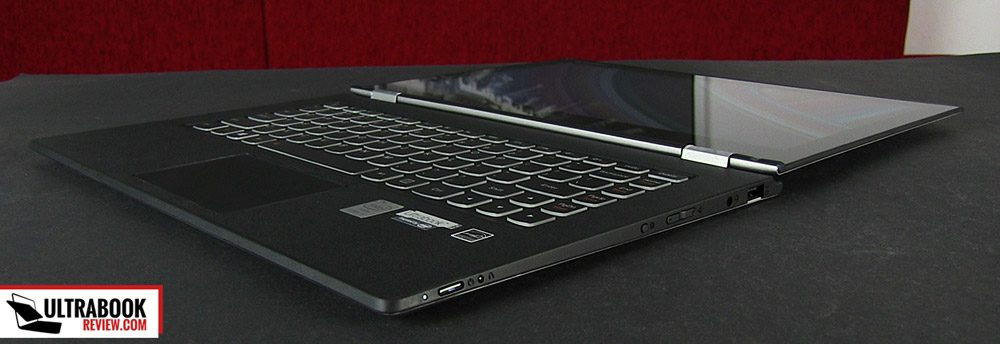

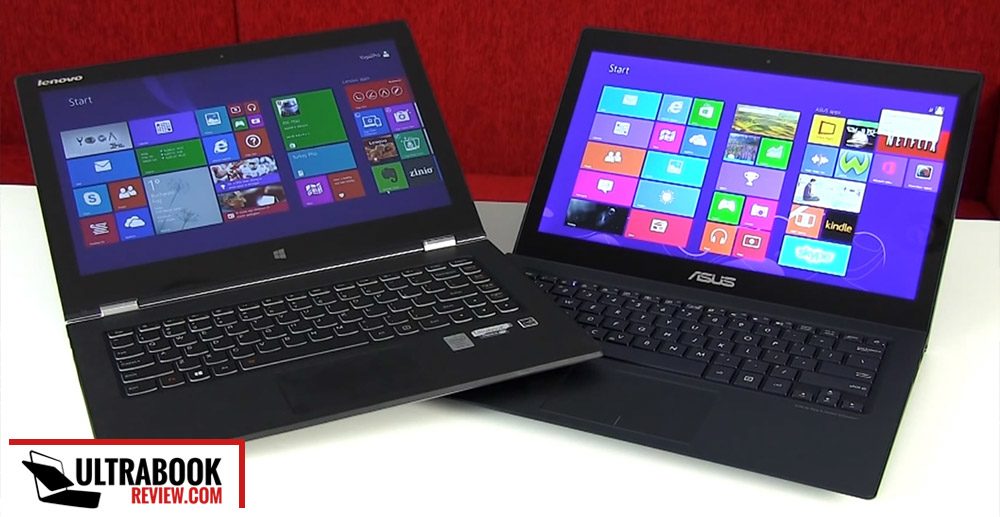
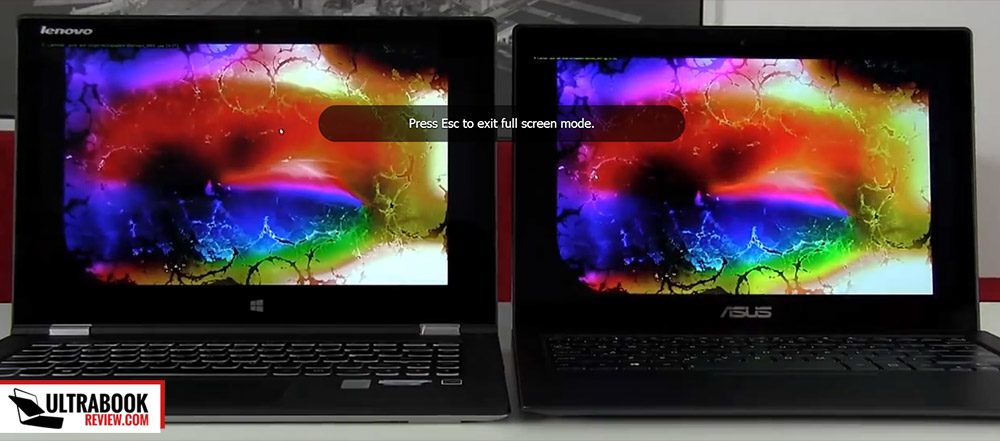
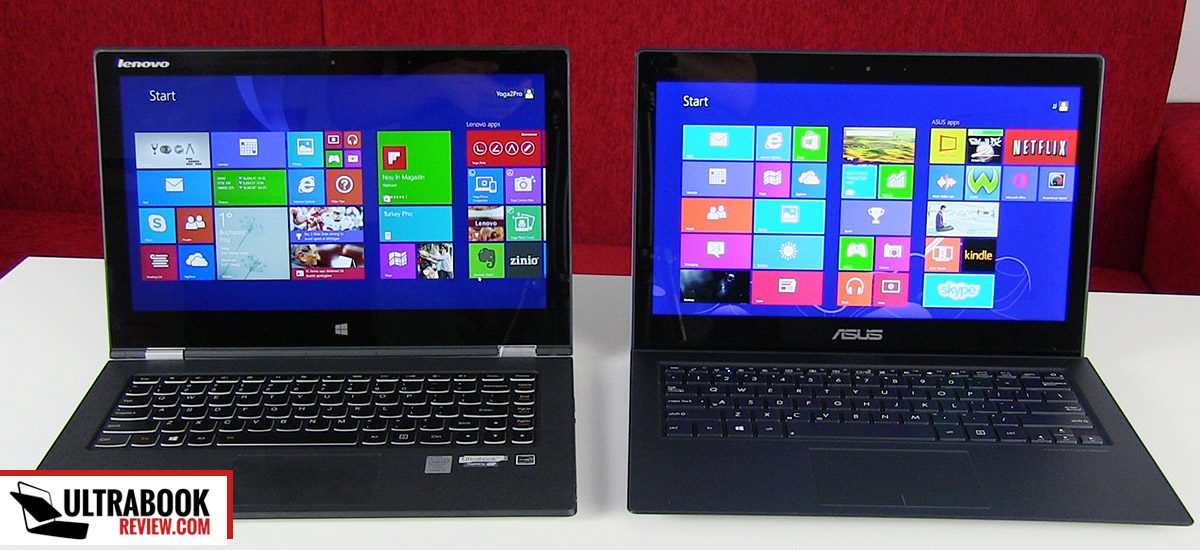

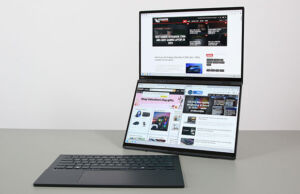
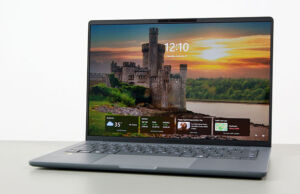
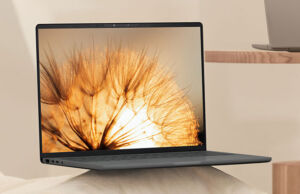
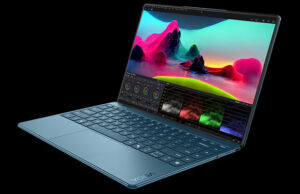
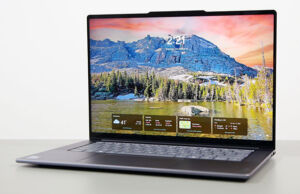
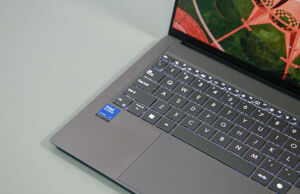




Johann
January 21, 2014 at 8:36 am
Hi
Can you talk a bit about the abilities of these two laptops to drive 4K external displays?
Thanks
Andrei Girbea
January 21, 2014 at 12:20 pm
I’ll have to do some research on this matter, but from what I know right now, you need:
DisplayPort 1.2 or higher to run 4K at 30 Hz or more (DisplayPort 1.3 for 60 Hz)
As for HMDI, HDMI 1.4a can do 4K at 30 Hz, but you’ll need HMDI 2.0 for 4K at 60 Hz.
Again, I’m not 100% sure on those, so take them with a grain of salt.
Those being said, the Yoga 2 Pro can only push 1080p resolutions through the HDMI on it, but there are solutions to push more, using an external docking unit or maybe an USB 3.0 to Thunderbolt connector. I have no experience with those though, so can’t say how well or if they will work at all with 4K res.
On the other hand, the Zenbook does come with mini-DP and a HDMI 1.4a port, so it will push 4K resolutions at 30 Hz, as long as the monitor supports HDMI 1.4 A as well. Not sure if it will work at 60 Hz though.
johann
January 21, 2014 at 6:29 pm
Thanks, I think you just confirmed my fears. I wonder who will be first to produce an ultrabook that can drive 4K@60Hz? Keep us posted.
jstar
March 8, 2014 at 4:22 pm
DisplayPort 1.2 can output 4K at 60hz if supporting MST – see the 2013 Retina Macbook Pro.
George Gruenstein
January 31, 2014 at 12:31 pm
I own a Yoga 2 Pro now for about 6 weeks. with the I7, 256 GB SSD, 8 GB RAM. Bestbuy was selling it for $1198. When I am at my office I have 2 x Dell 2412 monitors attached.
All in all, I am disappointed.
The reasons:
1. I constantly have to readjust the micro HDMI plug for the 1 monitor, every 2nd time the laptop gets out of hibernate it will not initialize it right.
2. WiFi gets slower by the time, I have to stop the service and restart it, or even better restart the laptop to get back to full speed. Which even then is still not great.
3. Speed is not faster then my old Toshiba wiht a I5 (2nd gen). But I am willing to blame it to Windows 8.1,
4. I can’t take the battery out. I work from different offices so I always have power except when I travel. SO it would make sense for me to take the battery out so conserve the lifetime.
My questions:
1. Any idea on how to speed up WiFi? any newer drivers?
2. Do you think its a good idea to install win 7?
On paper it looks like a nobrainer. For that kind of money an amazing machine. In reality I am not so sure…
Andrei Girbea
February 4, 2014 at 3:48 pm
1. Try to have a look on lenovo’s own forums and see if others are experiencing similar issues and got any solutions. You might find something helpful there. I for one haven’t encountered any wi-fi issues in the limited time I got to test this device
2. Not sure if Lenovo offers support for Windows 7. You might have a hard time finding suitable drivers if you decide to install Win 8. Also, I’ve found something on their site saying that installing a different OS might void warranty, if I’m not mistaken. So you might want to investigate on that as well
George Gruenstein
February 16, 2014 at 7:56 pm
after further review:
most of my issues as shown above are solved.
WiFi speed is now much better, I changed the channel used by my router, it seems there was some serious interference with other routers nearby.
Taking the battery out in order to fight the yo-yo effect is not needed. Lenovo has the energy manager where you can prevent that battery saturation.
Speed. I changed a lot of things, got rid of lot of things in my Win 8.1 and now it is about 30% faster.
Love the Keyboard, its great, have my problems with the touchpad and will us an external mouse whenever possible.
Still missing an additional USB 3, but I can live with only one.
All in all, if the Asus and the Lenovo would cost the same I would go for the Asus, but for $1198, this Yoga 2 Pro is the best machine I have come accross since months.
James
February 19, 2014 at 6:14 am
George, what did you do to speed things up? Wishing I didn’t have to do this out of the box.
Tracy
February 15, 2014 at 3:27 pm
Currently, i’m looking for the ultrabook which can render 3d (archicad n artlantis) (i have another laptop for this already) in class. I narrowed down at these ultrabook: asus ux301La (high performence, best design), lenovo yoga 2 pro (best price, hybrid), vaio flip 13A ( hybrid w stylus) and Razer Blade 14 ( best performence).
Can you help me choose one from those?
Andrei Girbea
February 16, 2014 at 7:11 pm
Looks like you need something really powerful, that’s why the Asus UX301LA and the Razer Blade 14 are probably your best picks in that list.
However, have a look at some of the other options in here, you might fight something you like: https://www.ultrabookreview.com/2071-best-gaming-ultrabooks/
Tracy
February 25, 2014 at 7:13 am
thanks for your replies. Now i’ve torn between the ux301la and ux302lg, does the chip 4558u make big different at 3d rendering compare with the 4500u?
Andrei Girbea
February 25, 2014 at 4:04 pm
If you’ll read my UX301LA vs UX302LG post her eon the site, you’ll see that the UX301LA was actually faster at editing a video file in WIndows Movie Maker, by about 10-15%
Tracy
March 3, 2014 at 5:07 pm
Thanks Andrei,
1 last question. Comparing the asus ux301la i7 and the razer blade 14 i7, which one will be faster as rendering, and how much?
Cause the razer has quad-core and dedicated card compare to the asus. So i hope the extra weight will worth its performence. Btw, do u think the razer’s display too bad compare with the asus?
Andrei Girbea
March 3, 2014 at 10:34 pm
The quad-core on the Razer will be faster. I can’t say by how much, as I haven’t tested that particular CPU yet. But I’d say at least 15%, probably more
George Gruenstein
February 16, 2014 at 7:57 pm
if money is not the issue, you should try the ASUS UX301LA, maybe the 302
James
February 19, 2014 at 6:06 am
I own the previous version of the Zenbook that has the Core i5 4200 (haswell). I also just bought the core I7 Yoga 2 Pro. I must say, outside of the tablet mode on the Yoga 2 Pro, I prefer to use my Zenbook. Even with the i5, the Zenbook is zippier. I feel like there’s just something that weighs the Lenovo down in turns of application speed and navigating. Also the there is a HUGE difference in the responsiveness and overall usability of the trackpad/ mouse pad. Basically the Yoga’s pad sucks compared to the Zenbook. It doesn’t recognize my two finger click ever (which is supposed to be the left right click) and the left clicker isn’t very responsive, which is just aggravating. Because of the trackpad gestures, the smaller trackpad on the Yoga is prone to errors. I find myself always switching programs, accidentally swiping from the left pad, which happens less when using my Zenbook. Looks like a commenter says he cleared out a bunch of stuff on the Lenovo to make it more zippy, so perhaps I’ll try that before I return this so far disappointing device. I really want to like it more because of the tablet function.
I also noticed that because of the higher resolution on the YOGA 2, browsing in chrome looks like crap, even after scaling. Internet explorer looks great. Spotify also looks like crap.
Really thinking right now that the Zenbook that I got for $1,000 with lower specs than the Yoga 2 is the way to go here.
Andrei Girbea
February 23, 2014 at 12:48 pm
Hey James. THanks for your feedback, it’s much appreciated. What the model number of your Zenbook?
James
February 19, 2014 at 6:13 am
I have a bunch of gripes with my Lenovo.
1 – The trackpad is terrible. It’s too small, has too much friction (especially when my hands are somewhat moist). The left click button rarely sensed my clicks the first time unless I press it hard and the two finger click gesture (to be the right click) flat out doesn’t work. Because it’s too small I find myself accidentally switching programs through the swipe gesture accidentally, frequently
2 – Because of the high screen resolution, browsing in chrome looks like crap, even after I’ve zoomed in. Spotify also looks terrible. You’d thing it would look great with the high ppi, but no, because it needs to be scaled, these programs just don’t give that native resolution clarity. Kind of pointless if you don’t work on graphics and aren’t running high resolution monitors. It’s like trying to drive a Ferrari offroad. It’s nice to own, but most of the time, you’re wishing you would have opted for something more suitable for the terrain.
James
February 20, 2014 at 10:21 pm
I’ve left two comments here that gave additional negative insight into the yoga 2 pro. Both of them have been deleted. This leads me to believe that your reviews aren’t 100% forthcoming and that you have some incentive to delete negative comments. Not sure that I can trust your reviews again. If this isn’t the case, you’ll re-post my earlier comments.
Andrei Girbea
February 23, 2014 at 1:01 pm
They were not deleted, but I did take some time to get them published. I manually approve and reply to all comments, and sometimes this can take a few days. Hope you understand :)
Anders
February 23, 2014 at 9:25 am
Hi,
How much of an annoyance is the screen glare on these ultra books? Are they much worse for outdoor use/cafe use than for example a think pad yoga with anti glare or a MBA 2013?
Andrei Girbea
February 23, 2014 at 1:04 pm
Well, if you’ll compare them to the NBA 2013 or the ThinkPad Yoga, the glare is not a lot worse. You can probably get used to it in the end, although if you’ll work outside, it can be rather distracting.
When compared to older non-glare screens (like what I have on my THinkPad X230 or what HP, Lenovo, Dell, Sony etc have on their business models, than yes, the glare associated with these touchscreens can be a pain.
I’ll try to shoot a video the next time I get a new ultrabook in, and compare it to the screen on the X230 and the one on the THinkPad Yoga, so you and others will make a better idea on what to expect. Should be up in a few weeks though
Anders
February 23, 2014 at 1:29 pm
Ah nice that could be interesting.
Thurman
March 12, 2014 at 6:36 am
I recently returned my Yoga 2 Pro, i7, 8GB RAM, 256GB SSD. The strangest thing happened. I tried to use it and the only action from the Yoga was a blinking keyboard, every 5 seconds. I pressed the power button (held for 8 seconds), is shutdown. Restarted, would go through the boot up process, then back to a blank screen with the blinking keyboard. Did much research online and found out these Yogas’ have ‘Sleep’ issues, and most of the time, a factory reset has to be done to have is usable again. We spoke to Lenova, they said we should either exchange or return ours. Have you heard of this issue? I really liked the Yoga, but what good is it if you cannot wake it up???
Andrei Girbea
March 12, 2014 at 11:50 am
Haven’t encountered this on my test unit. But I only used it for a week or so and such quirks probably appear later down the line…
Lisa
March 12, 2014 at 6:26 pm
Torn.. ordered the Lenovo Yoga Pad 2 online from Lenovo..was supposed to have shipped on the 10th and hasn’t.. meanwhile reading all kinds of bad reviews about the wifi, the yellow and the sleep issue.. sad I was super excited, well now thinking I should cancel now as of yet unshipped Lenovo which they are again telling me will ship in 24-48 hours.. and buy from Best Buy except then I only have 15 days to return and know that Lenovo won’t help with issues like when I bought my Samsung Galaxy S4 from Amazon and Samsung and Verizon would not help with issues..Really want a 13″ convertible laptop that I can use for Quickbooks as well as fun stuff like Camera/video.. was wishing that Samsung one you wrote about was out but it is not yet released.
Andrei Girbea
March 13, 2014 at 10:39 am
Well, Lenovo won’t allow returns? Are you sure about that?
Erik Reppen
March 15, 2014 at 9:30 pm
Check the dates on those review concerns. The wi-fi problem was outdated driver issue. I believe they at least partially addressed the yellow problem so that it’s only really a concern in power-saver mode.
Andrei Girbea
March 17, 2014 at 11:08 am
Read the reviews, it’s published after those fixes were released. And while they do address the issues, they don’t solve them completely
Erik Reppen
March 15, 2014 at 9:22 pm
Would you expect much battery life difference between the Yoga 2 Pro i5 and i7? It might get my techie status revoked to say as much but I’m really bummed I can’t get the i7 with 8 gigs of RAM and a 256gb SSD rather than 512gb because they don’t offer that configuration in orange. :) But if you get significantly more battery out of the i5 I might just go for that.
Andrei Girbea
March 17, 2014 at 11:07 am
The difference is going to be quite marginal, but it really depends on what you’re going to do with these laptops. With everyday use, I’d say the i5 version will maybe last up-to 30 minutes or so longer.
Kyle G
August 13, 2014 at 12:53 pm
In your second paragraph under “looks, ports, and build quality” it sounds like you are stating the Lenovo has a gorilla glass screen but as far as I can tell that is not the case.
Andrei Girbea
August 13, 2014 at 1:40 pm
I’m not, read again. I’m saying that one one side we have the Asus Zenbook with it’s Gorilla Glass covered case , on the other there’s the Lenovo, bla bla
Andy
September 5, 2014 at 9:16 am
Thanks for great article. I have been researching these notebooks and was kind of leaning toward the Yoga for its versatility but now kind of leaning toward the Asus. No decision yet but your article helps.
thanks
Andrei Girbea
September 5, 2014 at 9:53 am
Glad it helps. Major pros for the Yoga are the form factor and price, while for the UX301LA is performance, but that comes with a high price
Thomas
September 27, 2014 at 6:56 am
Go with the Zenbook, it is so much better!
I used to own a Yoga 2 Pro. It is a nice convertible for sure, but there are a lot of downsides.
First of all the display: Yellow still looks bad even with all the software/bios tweaks. Also the whites look bad compared to the bright display of the asus zenbook. That said, the resolution of the zenbook may be not as good as the resolution of the yoga 2 pro, but colours and brightness is so much better.
And then there is the flickering. At low brightness the display will flicker. It is almost not noticable, but it is there and can be very disturbing. Next to this there is sometimes an even worse flickering, where the whole display goes crazy and you can’t see anything at all (white/black flickering stripes all over the screen).
And last but not least, there is the screen-bleeding. I had all in all three replacements and all of them had screen-bleeding (bright light spots on the edges of the display). It is not that bad, but it is there and for me it was very disappointing because i do watch a lot of videos. There are many movies with the black bar on the top and bottom and you will notice the screen-bleeding a lot.
The IGZO panel of the asus zenbook has no screen-bleeding at all. 0! No flickering, not any issues.
Second: If you do not buy the newest yoga 2 pro model you will end up without a ac-wirless-card which can cause a lot of troubles (if you do not want to replace it by your own)
Final words: Luckily i returned the yoga 2 pro and replaced it with the asus zenbook ux301. It is so much better and worth the extra money.
Andy
September 27, 2014 at 11:13 pm
Thanks for that input Thomas. Now I am just awaiting the new ASUS UX305 since seeing news release. Awesome specs and I love the weight.